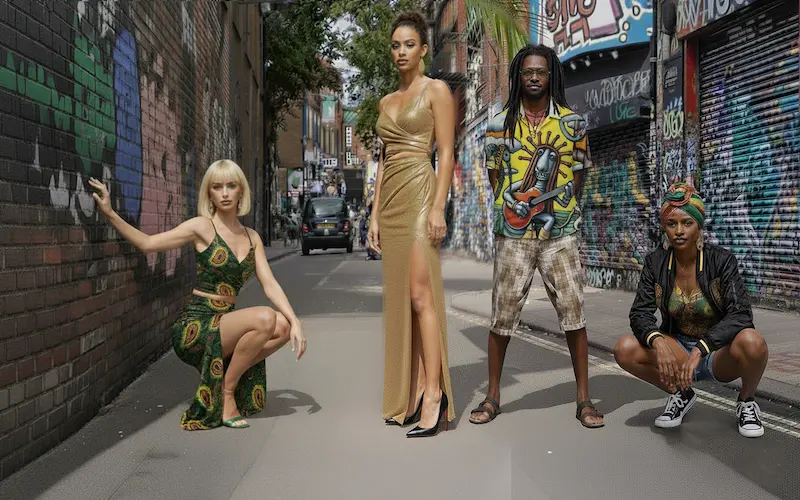
Introduction to Reggae Attire
Reggae outfits have shaped global fashion for decades.
Born from the lively music and Rastafarian culture of Jamaica, reggae attire is a beautiful mix of vibrant colors, natural materials, and relaxed fits.
From the bustling streets of Kingston to the chic runways of Paris, this Caribbean fashion movement keeps inspiring international brands, influencing how streetwear reflects identity, rebellion, and authenticity.
Beyond the Music: The Enduring Power of Reggae Attire and Outfits
When reggae comes to mind, most people think of the deep bass, the unique rhythm, and the soulful sounds of icons like Bob Marley and Burning Spear. But the visual side of reggae—the reggae attire—carries just as much weight, sending powerful messages of resistance, peace, and identity.
What started as the everyday wear of Kingston’s Rastafarian communities has blossomed into a global aesthetic. Reggae outfits—from crocheted tams to striking Rasta-striped jackets—have become symbols of liberation. They’re more than just clothing; they’re statements of pride and spiritual connection.
Unlike trends that emerge from high-fashion runways, reggae style has its roots in the streets, embodying the philosophy of “livity”—living in harmony with nature and oneself. The use of natural fabrics, handmade accessories, and earthy tones reflects that ethos beautifully.
For readers familiar with ReggaeGroove’s “Reggae Fashion: From Ska to Punk” or “Rastafarianism and Reggae a World Movement” this article continues to explore the global impact of that movement—showing how Jamaican fashion has reshaped modern streetwear and inspired brands around the world.
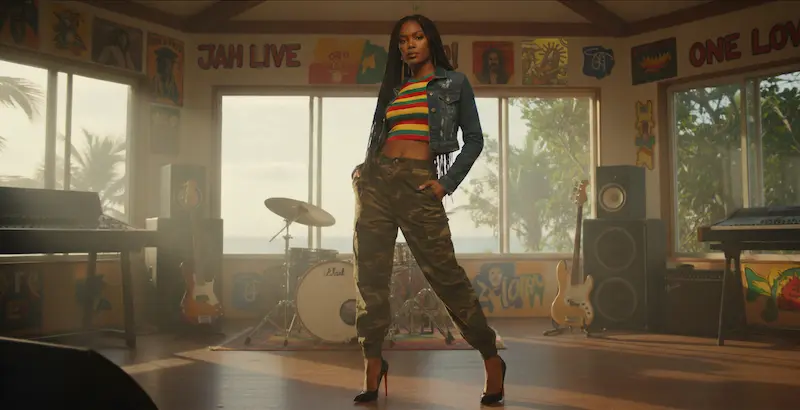
Core Elements of Reggae Attire and Jamaican Style
To truly grasp reggae’s worldwide influence, it’s essential to dive into the essence of the original Jamaican outfits.
The Colors of Identity
Few color schemes carry as much meaning as red, gold, green, and black—the Ethiopian colors embraced by Rastafarians. Red symbolizes sacrifice, gold represents prosperity, green stands for the land, and black signifies the people.
High-fashion brands like Gucci, Tommy Hilfiger, and Adidas have embraced these vibrant hues in their collections, sometimes even labeling them as “Rasta editions.” What were once colors of protest and pride have now found their way into sneaker releases and festival fashion, creating a bridge between reggae’s rich history and the visual language of modern streetwear.
Comfort and Confidence
What makes reggae outfits unique in global fashion?
So, what sets reggae outfits apart in the world of fashion? Reggae fashion is all about freedom and authenticity. Loose-fitting shirts, drawstring trousers, and breathable fabrics reflect the easygoing vibe of island life. They’re not just practical; they’re a bold statement—clothing that shouts, “I’m proud of who I am.”
That relaxed fit, so prominent in Kingston’s dancehalls, became the template for what we now call urban cool. From the baggy styles of 1990s hip-hop to today’s oversized tees, the reggae silhouette continues to thrive.
Iconic Headwear
The tam — or “rastacap” — stands out as one of reggae’s most iconic symbols. Originally designed to protect dreadlocks, it has transformed into both a spiritual and fashion statement. In the bustling markets of Kingston, the streets of Brixton, and the neighborhoods of Brooklyn, the tam remains a powerful symbol of pride and community.
Natural Hair and Dreadlocks
Dreadlocks, much like reggae fashion, represent a deep spiritual commitment. Rooted in Rastafarian beliefs and the Nazarite vow, they challenge conventional beauty standards. Artists like Peter Tosh, Lauryn Hill, and Ziggy Marley have turned their locks into powerful symbols of confidence and cultural identity.
The Global Ripple: How Jamaican Outfits Crossed Borders
Migration and Diaspora
During the 1960s and ’70s, Jamaican migrants took their music, language, and reggae fashion with them as they settled in new lands. In cities like London, Toronto, and New York, their unique style blended with punk, mod, and hip-hop cultures. Brixton youths paired Rasta caps with leather jackets, while Toronto reggae fans layered military shirts over denim.
This Caribbean diaspora sparked a dynamic exchange: reggae influenced global street style, and in turn, global designers began to reinterpret reggae aesthetics.
Music Videos & Media: Showcasing Reggae Outfits Globally
Album covers like Bob Marley’s “Kaya” or Peter Tosh’s “Equal Rights” became iconic style guides for youth all over the globe. The rise of MTV in the 1980s really kicked this visual culture into high gear. Watching reggae legends decked out in their Jamaican outfits—think earthy shirts, Clarks boots, and Rasta caps—offered the world a vibrant lookbook of rebellion.
Cultural Exchange and Global Tours
As reggae bands hit the road across Europe, Japan, and Africa, fans started to embrace their style. Designers in Tokyo began to draw from Rasta color schemes, while surf brands in California mirrored reggae’s laid-back vibe. The Caribbean fashion influence started to reshape wardrobes from Seoul to São Paulo.
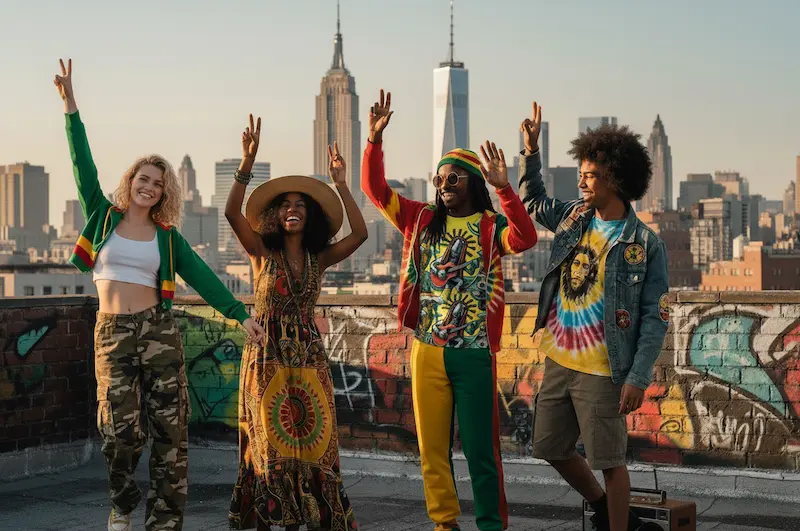
Direct Inroads: Designers and Brands Taking Inspiration
The connection between fashion and reggae has always been a two-way street.
In Britain, Vivienne Westwood blended Jamaican military surplus styles into her punk collections. Clarks Originals—already a hit in Kingston—found new fans thanks to reggae’s endorsement. Later on, brands like Supreme, Stüssy, and Obey took cues from reggae’s unique mix of spirituality and street edge.
More modern designers—like Wales Bonner, Patta, and Daily Paper—make Caribbean identity a core part of their work. Bonner’s tailored tracksuits and crochet details pay homage to Rastafarian craftsmanship, linking the London runway back to Kingston roots. Even big sportswear brands like Adidas and Puma have rolled out reggae-inspired sneakers featuring Rasta colors.
These choices aren’t just coincidences; they’re a nod to reggae’s undeniable style influence.
Some critics do, however, point out that while reggae’s aesthetic gets a lot of love, its deeper messages often get lost in translation.
True reggae fashion is about more than just looking good; it’s about consciousness and meaning, not just color coordination.
Modern streetwear brands are really tapping into this legacy, using graphic tees to showcase political and cultural awareness. In many ways, reggae’s print culture laid the groundwork for today’s statement apparel.
Sneaker Culture
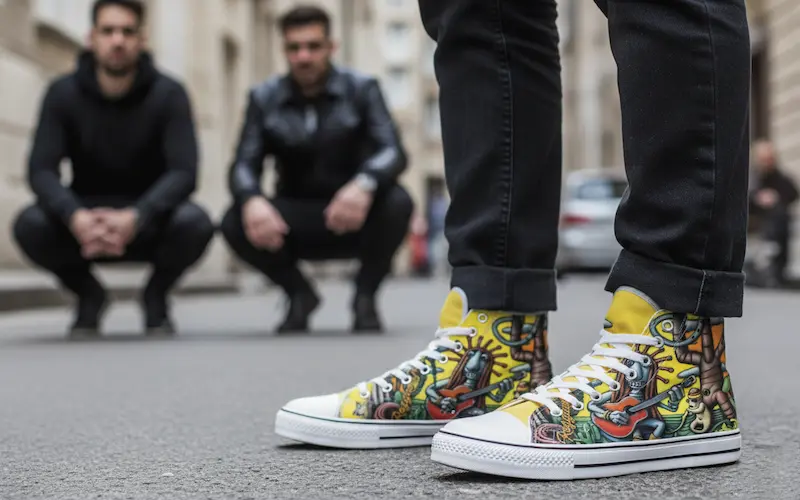
If reggae had a signature shoe, it would definitely be the Clarks Desert Boot. In Kingston, having a fresh pair of Clarks was a mark of dignity and respect. Later on, Adidas Gazelles and Puma Clydes joined the scene, mixing practicality with style.
Today’s sneaker culture—obsessive, expressive, and deeply rooted in subculture—owes a nod to reggae’s passion for well-crafted footwear.
Military and Workwear Influence
Reggae’s embrace of military jackets and cargo pants was as much about politics as it was about practicality. It showed solidarity with freedom fighters in Africa and the Caribbean. Those utilitarian pieces, worn with pride, became the blueprint for modern workwear fashion.
When brands like Carhartt or Dickies became staples on the streets, they unknowingly carried forward reggae’s legacy of resilience through fabric.
Cross-Pollination with Hip-Hop
As explored in ReggaeGroove’s “The True Hip-Hop Origins” reggae’s impact on hip-hop runs deep. Jamaican DJs like DJ Kool Herc brought sound system culture to the Bronx, helping to shape the early hip-hop scene.
Fashion made the leap too—baggy clothes, sneakers, and headwear traveled alongside the beats. What came out of this was a shared visual language rooted in rebellion and rhythm.
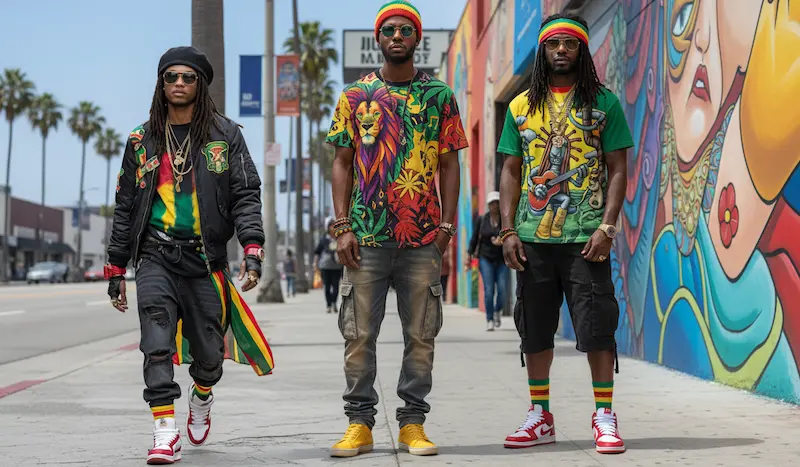
More Than a Trend: The Enduring Legacy of Reggae Attire
Why are reggae-inspired clothes popular today?
Primarily because they represent something genuine. Reggae attire isn’t just a trend—it’s a statement of individuality and spiritual grounding.
In a world dominated by fast fashion, reggae’s emphasis on natural materials, handcrafted garments, and cultural authenticity resonates more than ever. Crochet tops, hemp shirts, and sustainably dyed fabrics reflect reggae’s long-standing connection with nature.
Designers from all over the globe are now recognizing that reggae’s core philosophy—wear your culture with pride—continues to inspire. That’s why Rasta-inspired patterns appear in eco-collections from Milan to Melbourne.
When you look at it visually, reggae’s laid-back silhouettes continue to influence streetwear trends around the globe. Its impact weaves through the vibrant street culture of Los Angeles, the edgy aesthetics of London grime, and the lively festival styles of Lagos.

Dressing with Purpose on the Global Stage
Once you’ve enjoyed these classics, you’ll find that dub is a vast and exciting rabbit hole. Here are If you trace modern street fashion back to its roots, reggae attire stands out as one of its most significant foundations.
Wearing reggae-inspired clothing—a tam, a pair of Clarks boots, or a red-gold-green wristband—goes beyond just fashion; it’s about being part of a global narrative that celebrates pride, unity, and creative resistance.
In Brixton, reggae enthusiasts still come together sporting tams knitted by local elders. Over in Tokyo’s Harajuku district, stylists mix Rasta prints with minimalist denim. Meanwhile, in Lagos, young designers are reimagining reggae’s message through Afro-futurist streetwear. Each of these examples highlights how reggae’s philosophy of self-expression knows no borders.
Fashion trends may come and go, but reggae’s influence is a constant—because authenticity is always in style.
If this exploration of reggae’s global impact resonates with you, check out our comprehensive reggae fashion style guide and dive deeper into Rastafarian colors and cultural symbolism.
These connections remind us that our clothing can carry rhythm, purpose, and pride.
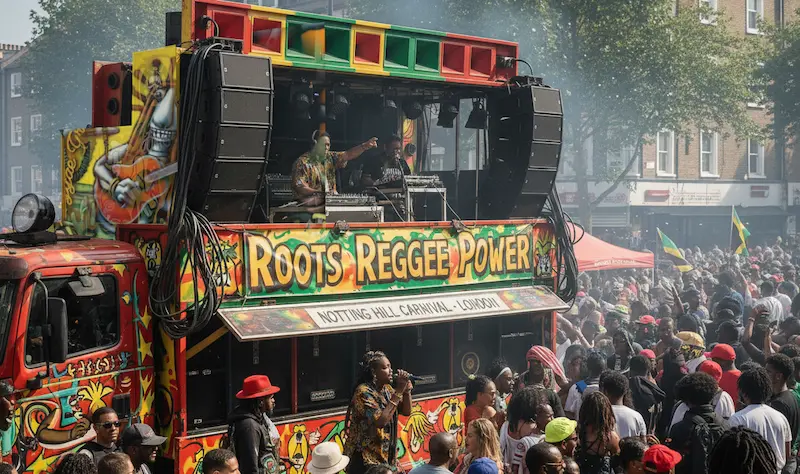
Summary
Reggae attire has long influenced global style. “Reggae Attire: How Jamaican Outfits Influenced Global Fashion & Streetwear.” delves into how reggae’s visual language—from Rasta colors to dreadlocks and loose-fitting silhouettes—has become a defining force in global fashion.
What started as a symbol of Jamaican pride and Rastafarian spirituality has transformed into a worldwide aesthetic embraced by both high-end designers and streetwear labels.
Above, we traced the journey of reggae outfits from the dancehalls of Kingston to the catwalks of London, revealing how migration, music videos, and cultural exchange have spread this vibrant style across continents.
In addition, we examine how reggae attire has played a role in shaping sneaker culture, military-inspired streetwear, and hip-hop fashion, while still standing for authenticity, unity, and rebellion.
Reggae attire is more than just clothing — it’s a vibrant expression of identity that keeps inspiring new generations. It serves as a reminder to the global fashion scene that true style is rooted in substance and storytelling.

FAQ
1. What makes reggae attire different from other fashion styles?
Reggae attire is unique because it goes beyond just fabric and fit — it embodies identity. The colors red, gold, and green symbolize unity, struggle, and hope, while the relaxed silhouettes offer a blend of comfort and rebellion. It’s a fashion narrative often tied to Rastafarian beliefs and Jamaican pride.
2. How did reggae outfits influence streetwear culture?
Reggae outfits played a significant role in shaping early streetwear by prioritizing authenticity and comfort. The baggy military jackets, Clarks boots, and bold graphic tees worn by reggae artists helped cultivate the relaxed confidence that defines modern streetwear. Hip-hop fashion, in particular, drew heavily from this Jamaican aesthetic.
3. Which brands have been inspired by reggae outfits?
Major brands like Adidas, Supreme, and even high-end designers such as Vivienne Westwood and Stella McCartney have embraced reggae-inspired colors, patterns, and relaxed cuts. Many capsule collections celebrate Jamaican culture or pay homage to reggae legends like Bob Marley.
4. Is reggae attire and style still relevant today?
Absolutely! Reggae fashion is alive and well, thriving in both mainstream streetwear and through independent designers who reinterpret classic reggae styles for new audiences. Whether it’s a Rasta-colored hoodie or a handcrafted crochet top, the message of self-expression and cultural pride remains as relevant as ever.





